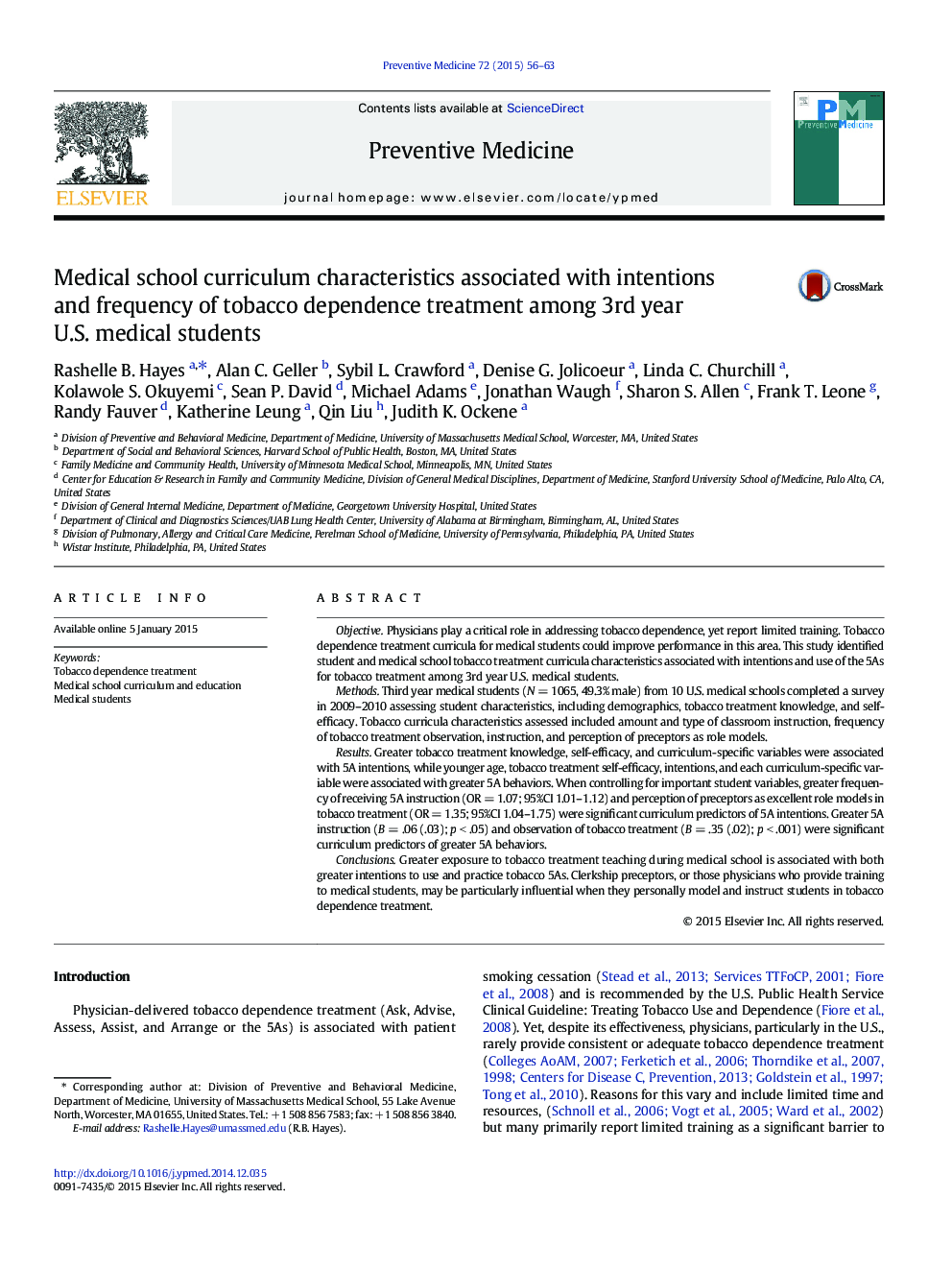| کد مقاله | کد نشریه | سال انتشار | مقاله انگلیسی | نسخه تمام متن |
|---|---|---|---|---|
| 3100384 | 1581642 | 2015 | 8 صفحه PDF | دانلود رایگان |
• Medical school training for tobacco dependence treatment (e.g. 5As) is limited.
• Tobacco curricula associated with student 5A intentions and behavior are unknown.
• 3rd year students (N = 1065) from U.S. medical schools completed surveys in 2009–10.
• Instruction and preceptors as role models were associated with more 5A intentions.
• More 5A instruction and observation were associated with student 5A behaviors.
ObjectivePhysicians play a critical role in addressing tobacco dependence, yet report limited training. Tobacco dependence treatment curricula for medical students could improve performance in this area. This study identified student and medical school tobacco treatment curricula characteristics associated with intentions and use of the 5As for tobacco treatment among 3rd year U.S. medical students.MethodsThird year medical students (N = 1065, 49.3% male) from 10 U.S. medical schools completed a survey in 2009–2010 assessing student characteristics, including demographics, tobacco treatment knowledge, and self-efficacy. Tobacco curricula characteristics assessed included amount and type of classroom instruction, frequency of tobacco treatment observation, instruction, and perception of preceptors as role models.ResultsGreater tobacco treatment knowledge, self-efficacy, and curriculum-specific variables were associated with 5A intentions, while younger age, tobacco treatment self-efficacy, intentions, and each curriculum-specific variable were associated with greater 5A behaviors. When controlling for important student variables, greater frequency of receiving 5A instruction (OR = 1.07; 95%CI 1.01–1.12) and perception of preceptors as excellent role models in tobacco treatment (OR = 1.35; 95%CI 1.04–1.75) were significant curriculum predictors of 5A intentions. Greater 5A instruction (B = .06 (.03); p < .05) and observation of tobacco treatment (B = .35 (.02); p < .001) were significant curriculum predictors of greater 5A behaviors.ConclusionsGreater exposure to tobacco treatment teaching during medical school is associated with both greater intentions to use and practice tobacco 5As. Clerkship preceptors, or those physicians who provide training to medical students, may be particularly influential when they personally model and instruct students in tobacco dependence treatment.
Journal: Preventive Medicine - Volume 72, March 2015, Pages 56–63
